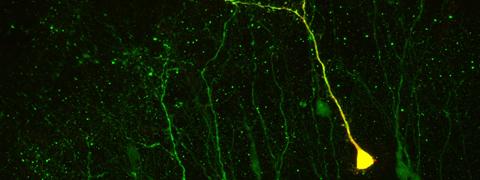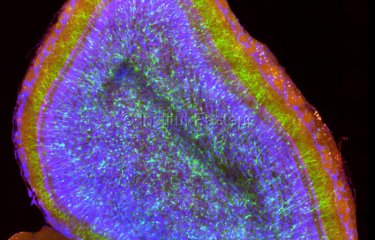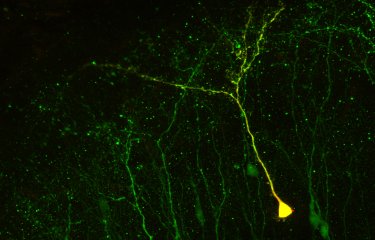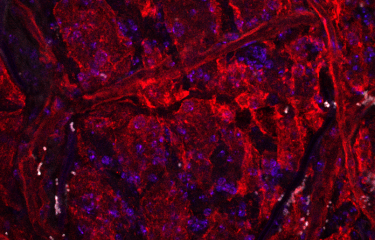Although it has been known for several years that the adult brain is capable of producing new neurons, how these neurons are integrated into existing, functional nerve circuits has hitherto remained a mystery. Scientists at the Institut Pasteur and the CNRS have just shown that new neurons set up a denser network of connections with the rest of the brain in contexts of active (as opposed to passive) motivation and learning. It is therefore mental states, rather than the type or diversity of the sensory environment, that determine the functional activity of adult-born neurons. These results were published in the PNAS journal on September 1, 2014.
Press release
Paris, September 1, 2014

In 1998, a Swedish team demonstrated that the adult human brain is the production site of new neurons. Since then, many questions have remained unanswered concerning the function of these new neurons and how they survive and integrate into their target areas. Scientists in the Perception and Memory research unit (Institut Pasteur/CNRS), led by Pierre-Marie Lledo, have provided some answers relating to the type of conditions that enable the integration of newly-formed neurons into adult circuits and pinpointed the identity of the partners they connect with.
The scientists focused on the production of new neurons in adult mice, in particular those neurons that integrate into the olfactory bulb, which is the region of the brain involved in analyzing odors. These adult-born neurons are seen as key elements in promoting neuronal plasticity – a crucial part in olfactory learning and memory.
Scientists at the Institut Pasteur and CNRS have been able to prove that the development and maturation of young neurons is profoundly changed in the context of olfactory learning in mice. They showed that connections between adult-born neurons and regions of the cerebral cortex are strongly reinforced when odorants are associated with rewards, and that these connections are less dense when the animals are simply exposed to these same odorants.
The psychophysiological context – here the fact that learning is reinforced by the animal's motivation to receive a reward – is also a decisive element in the construction of links between adult-born neurons and the cerebral cortex. Functional maturation of young nerve cells in the adult brain is therefore based on the meaning attributed to various sensations, and is not the result of mere sensory exposure.
If we transpose these findings to humans, we can better understand the role played by various mental states, such as attention, motivation, anticipation, expectation and pleasure, in the survival and functional integration of neo-neurons and, conversely, the role played by neurogenesis in learning and memory capacities in adults.
Illustration: Neo-neurons in an adult brain, Pierre-Marie Lledo, © Institut Pasteur
This study was funded by AG2R La Mondiale, the French National Research Agency and the REVIVE Laboratory of Excellence.
Source
Olfactory learning promotes input-specific synaptic plasticity in adult-born neurons, PNAS, September 1, 2014
Gabriel Lepousez(a,b,1,2), Antoine Nissant(a,b,1), Alex K. Bryant(a,b), Gilles Gheusi(a,b,c), Charles A. Greer(d,e), and Pierre-Marie Lledo(a,b,2)
(a) Perception and Memory, Institut Pasteur, Institut Pasteur, 25 rue du Docteur Roux, F-75724 Paris, France
(b) Centre National de la Recherche Scientifique Unité Mixte de Recherche 3571, 25 rue du Docteur Roux, F-75724 Paris, France
(c) Laboratory of Experimental and Comparative Ethology, University of Paris 13, Sorbonne Paris Cité, 93430 Villetaneuse, France; and
(d) Department of Neurobiology and
(e) Department of Neurosurgery, Yale University School of Medicine, New Haven, CT 06520
(1) G.L. and A.N. contributed equally to this work.
(2) To whom correspondence may be addressed.







